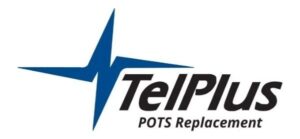Still Paying For POTS Lines?
Here's What To Look For On Your Bill

Table of Contents
If you’re still paying for POTS lines (Plain Old Telephone Service), you’re likely spending more than you need to. What’s Worse? You’re likely getting less in return. Since the FCC’s forbearance order eased obligations on carriers to maintain copper networks, major telecom providers have steadily pulled back service and investment. The result: higher prices, slower repairs, fewer technicians, and shrinking availability.
If your organization relies on critical life-safety and operational systems, such as fire alarms, elevator phones, security alarms, gate entry systems, fax lines, blue-light emergency trails, POS systems, and ATMs, it’s time to plan a move to a cellular POTS replacement. First, you need to find every legacy POTS line you’re still paying for.
Why You Need To Get Rid Of POTS
The regulatory landscape has shifted. With carriers no longer legally required to maintain copper lines, many are decommissioning lines and prioritizing new cellular connections. That reality shows up on your bill and in your day-to-day operations.
Costs Keep Climbing: monthly charges, taxes, fees, and “line items” tied to copper often rise year over year with no added value.
Repairs Take Longer and Quality Declines: With fewer field techs and scarce parts, repairs take longer, leading to extended downtime and service degradation.
New Copper Lines Aren’t Being Offered: Need a replacement or an additional line? In many markets, it’s simply not available.
If your organization relies on fire alarm panels, elevator emergency phones, security gates, fax lines, blue-light phones, POS systems, ATMs, and similar devices, it’s time to switch to a cellular solution. However, before replacing anything, you must first identify all legacy lines still in use and included on your invoice.
Where Are POTS Lines Hiding On Your Bill
POTS charges are notoriously slippery. They often appear under vague, legacy terms that don’t explicitly say “POTS.” A quick scan won’t cut it; you need to read line items closely and match them to real devices onsite.
Common Terms for POTS Lines on Telecom Bills
| Billing Term | What It Typically Refers To |
|---|---|
| Analog Line / Analog Voice | Standard copper phone line |
| Centrex Line | Legacy multi-line business phone service over POTS |
| Fire Alarm Line | Dedicated POTS line for alarm panel backhaul |
| Elevator Phone Line | Life-safety phone line in elevator cabs |
| Alarm Circuit / Security Line | POTS for intrusion, video, or access control systems |
| Fax Line / Fax DID | Direct inward dial (DID) used for fax over analog |
| Local Line or Business Line | Generic label for basic analog voice |
| 1MB / 1MBPS Circuit | Misleading label often tied to legacy copper data or voice |
| Ground Start Line | Specialty signaling type used in POTS applications |
| Coin Line | Older term—often still used for emergency/public phones |
| Off-Premise Extension (OPX) | Remote analog line extensions to other buildings |
| Line Charge / Voice Line | Non-specific analog voice line billing |
| Voice Grade Line | Technical term for analog voice—common in enterprise accounts |
| Business Trunk Line | Can refer to analog trunks (vs. PRI/SIP) |
| Loop Start Line | Like Ground Start—analog signaling type |
| Standalone Voice | Unbundled analog voice service |
| Legacy Voice / Traditional Voice | Indicates copper-based service |
| Basic Telephone Service | Catch-all for a single analog line |
| Message Rate Service | Metered/usage-based analog billing model |
| Local Measured Service | Usage-based billing over analog |
| 1FL or 1FB | 1-Party Flat Business/Line—common AT&T/Verizon analog code |
| Individual Line | Telco term for a non-PBX analog line |
| Wire Center Line | Connection from central office—likely POTS |
| Circuit ID / Special Circuit | Analog “circuits” with obscure IDs |
| Emergency Line | Generic label—often POTS for fire, elevator, or security |
| Direct Line / Dedicated Line | Non-IP, dedicated analog connection for a device |
| Rotary Line / Rotary Hunt Group | Outdated multi-line analog setup |
| DID Trunk (non-IP) | Direct Inward Dialing trunk using POTS (not SIP) |
| Facility Access Charge (FAC) | Often tied to physical copper maintenance—red flag |
| Analog Access | Straightforward analog access fee |
What to Do After Finding These Hidden POTS Line Charges
Gather Invoices and Contracts: Pull 6–12 months of telecom bills for every location so you can see repeating charges and seasonal anomalies.
Flag Legacy Line Items: Use the table above to highlight anything that looks analog, non-IP, or “voice grade.” Note associated taxes/fees, too.
Map Lines to Devices: Onsite, trace each billed line to a physical device (fire panel, elevator phone, gate, fax, etc.). If you can’t find the endpoint, it’s suspect.
Validate Necessity: Determine if each line is still required. Some lines are active on paper but disconnected in reality. Others are mission-critical life-safety paths.
Prioritize Life-Safety First: Plan replacements for fire, elevator, emergency, and security systems before non-critical lines like occasional-use fax.
Choose a Cellular POTS Replacement: Select a managed “POTS in a Box” device that emulates analog dial tone and supports compliance, battery backup, and remote monitoring. We can help find the right fit for you!
Phased Migration: Our team can set up your ‘POTS in a Box’ solution so you can still use your legacy devices without interruption.
Cancel and Confirm: After successful cutover, cancel the legacy line and verify the charge disappears from the next invoice.
POTS Replacement Is Here To Help
Some analog lines still serve life-critical infrastructure, and those systems must work every time. That doesn’t mean you have to accept rising costs, reduced service, and declining call quality. Cellular POTS replacement devices emulate a traditional analog line, but ride over modern networks (LTE and/or Ethernet), adding redundancy, remote visibility, and battery backup. You keep your existing equipment (fire panels, elevator phones, gates, fax, POS, ATMs), stay compliant, and shed the unpredictable costs of copper.
Get Started With Cellular POTS Replacement
Stop overpaying for legacy services and start modernizing with confidence. If you’re still paying for POTS lines, we’ll help you locate them, audit your invoices, and accurately map every charge to a specific device. Then we’ll plan a clean, phased migration to a cellular POTS replacement that cuts costs, boosts reliability, and keeps your safety systems online.
